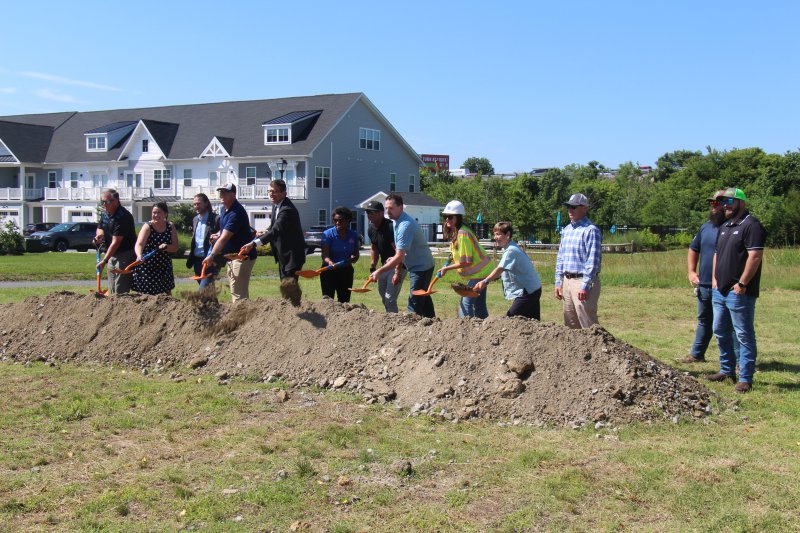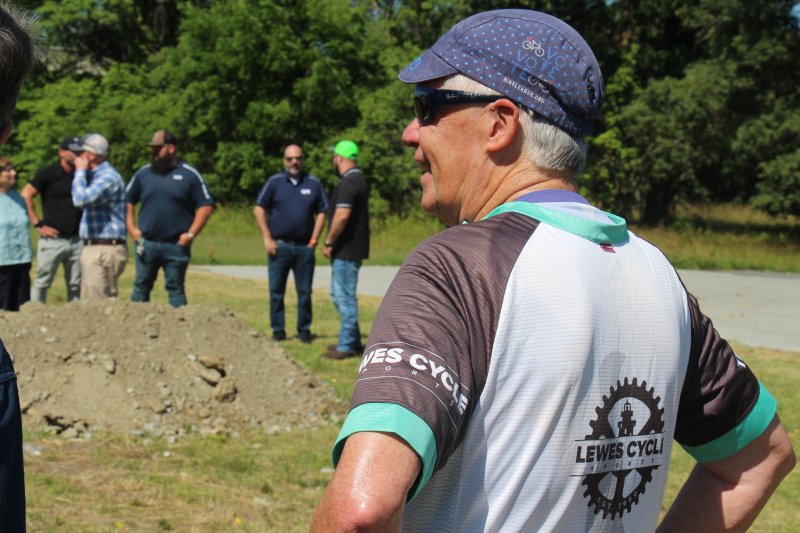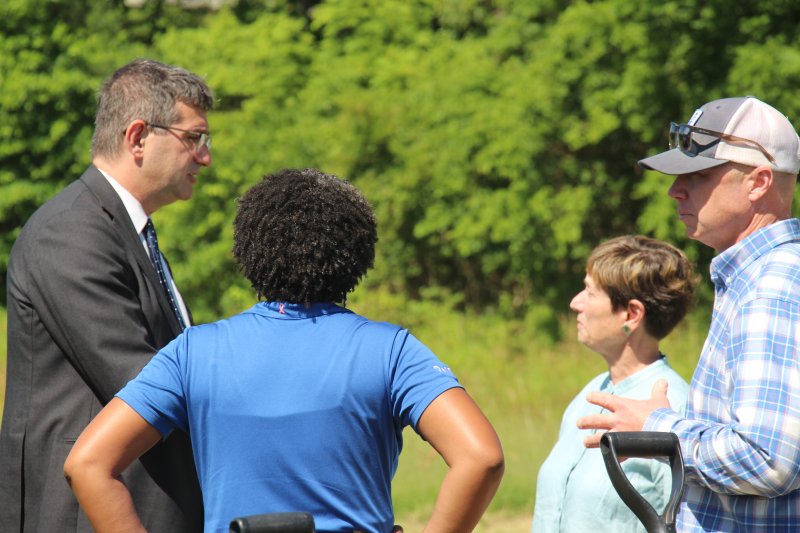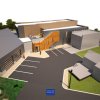Work set to begin to eliminate eight Route 1 crossovers

Ray Quillen of Lewes remembers waiting on his bike in the middle of a Route 1 crossover about 15 years ago when an apparently impatient driver crossed the grass median, the car brushing against Quillen’s clothing as it passed.
The crossovers were not as much of a hazard when Quillen, a 77-year-old Lewes native, was growing up and Route 1 was a two-lane road with little traffic. But as summer beach traffic increased and year-round housing spread, they became dangerous.
After his literal brush with disaster, Quillen would travel on his ride-on mower two miles from his home on a regular basis to cut a path through the brush below the Nassau Bridge to create a safe passage that avoided the crossovers. A multipurpose paved path built under the bridge about 10 years ago created a permanent route for walkers and bicyclists.
But cars still had to use the crossovers.
After years of planning, work is expected to begin soon on a $57 million project to eliminate eight crossovers that stretch about 1.6 miles between Five Points and Red Mill Pond to the north.
Gov. Matt Meyer and other state and county representatives gathered June 20, with Delaware Department of Transportation officials in a field along Nassau Road for an official groundbreaking ceremony for the project.
Meyer, who said he is an avid bicyclist, emphasized the project would accommodate not only motor vehicles but also walkers and cyclists.
“I think people know that multimodal is really important to me,” he said. “It’s magic to me to see the investment that has been made before to make sure people can move within this community without a car, and they can do so safely.”
The Route 1 project will create two miles of multiuse paths and a 49-space parking lot to access the adjacent Lewes-to-Georgetown Trail.
Utility relocation work is planned this year, followed by more extensive work to convert Nassau Road to a service road and create another on the west side of Route 1.
Three roundabouts will be constructed, two of them on the service roads flanking the highway, connected by a new road that will give traffic a route under Route 1 at the Nassau Bridge. A third roundabout at Minos Conaway Road will access the service road on the west side of Route 1. Work is expected to be completed in September 2028.
Fewer accidents will mean less congestion and road maintenance, cheaper automobile insurance and easier access to schools, businesses and hospitals, Meyer said.
“As you can see behind me, we basically have a river of asphalt, and sometimes the current is swift and high and rough, and that causes an issue for our first responders and for our citizens and for Delawareans,” said Sen. Russ Huxtable, R-Lewes, referring to Route 1, as southbound traffic was stopped on the overpass above the walking trail.
The trail will be moved to the south side of the southernmost pillars supporting Route 1, and a two-lane road will be created in its current location, connecting the planned service roads and eliminating the need for Route 1 crossovers.
DelDOT Secretary Shanté A. Hastings, who has lived in Sussex County for decades, said the design was created by project engineer Nick Rigolino.
“This is a huge project to design in-house,” she said. “He has reimagined this area to make it safe.”
Meyer praised county and state legislators for supporting the project.
“It takes leadership at my office with DelDOT making sure that we’re preserving the quality of life in this area while making sure we’re moving forward,” he said. “Making sure that passenger safety and automobile safety and pedestrian and cyclist safety is all top of mind. Because if people can’t move from place to place safely in any community, what are we doing as elected leaders?”
Mary Jo and Robert Moyer, who were walking the Lewes-to-Georgetown Trail near the site before the groundbreaking, said they were looking forward to the safety improvements and think any disturbance during construction will be worthwhile.
“They’re dangerous, these crossovers from [Route] 16 to Five Points,” Mary Jo said.
The federal government will pay the entire cost of the project, including an 80% standard contribution plus federal credits, Meyer said.
“Not a single one of these dollars is coming from money that you pay to the state government or that we borrowed,” he said. “It’s from federal government funds.”
Quillen said he is still an avid cyclist 30 years after he took up the sport when he developed knee problems from running, but his annual cycling distance has dipped from 8,600 miles in 2000 and 4,100 miles last year.
The project to eliminate the Route 1 crossovers will make cycling safer, he said.
“This is a wonderful thing,” Quillen said.

Kevin Conlon came to the Cape Gazette with nearly 40 years of newspaper experience since graduating from St. Bonaventure University in New York with a bachelor's degree in mass communication. He reports on Sussex County government and other assignments as needed.
His career spans working as a reporter and editor at daily newspapers in upstate New York, including The Daily Gazette in Schenectady. He comes to the Cape Gazette from the Cortland Standard, where he was an editor for more than 25 years, and in recent years also contributed as a columnist and opinion page writer. He and his staff won regional and state writing awards.
Conlon was relocating to Lewes when he came across an advertisement for a reporter job at the Cape Gazette, and the decision to pursue it paid off. His new position gives him an opportunity to stay in a career that he loves, covering local news for an independently owned newspaper.
Conlon is the father of seven children and grandfather to two young boys. In his spare time, he trains for and competes in triathlons and other races. Now settling into the Cape Region, he is searching out hilly trails and roads with wide shoulders. He is a fan of St. Bonaventure sports, especially rugby and basketball, as well as following the Mets, Steelers and Celtics.





















































